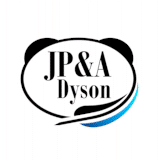The self-publishing process
Thinking about self-publishing your book? Make sure you go through all these steps first – and in the right order! Do them the wrong way round and you could find yourself wasting time and / or money.
1. Be sure you want to self-publish
You need to be 100% sure that you want to self-publish, because after you've done it there is no going back. Publishers and literary agents will not normally consider books that have been self-published, so if you wanted to get your book to print the old fashioned way you should stop now and rethink. Make absolutely sure that you've exhausted every possible opportunity for traditional publishing before you head down the self-publishing path.
For more information, see Why choose traditional publishing? and Should you self-publish?
2. Protect your copyright
Authors often wonder about what stage in the process they should protect their copyright – often thinking that it's best to leave it till the end so that there are no more changes to make to the book after it is registered.
However, this isn't the case. The key thing is to protect your work before you let other people see it – or, if you've already let other people see it, as soon as possible thereafter.
Don't worry about making small changes to your work after registering it – as long as the work is still recognisable as the same piece of work it will still be protected. Obviously, if you completely change everything you've written then you're going to need another registration, as it will effectively be a different book, but if you've just edited it and made minor alterations this won't affect your protection.
You can register you copyright online at https://www.copyrightregistrationservice.com
3. Get your work edited
Editing is a vital step often overlooked by authors who self-publish. The result can often be an amateurish book littered with embarrassing mistakes. Any professionally published book will go through an editing process, and it's important that the same applies to your self-published book. It's also important to complete the editing process before beginning the layout, or you could find yourself having to start the layout again from scratch. For more information on editing for self-publishing, click here
4. Choose your self-publishing path
Before you can go any further you are going to need to choose a size for your book, and in order to do that you are going to need to choose a self-publishing path.
There are various different ways of getting self-published, but in general these range from the expensive hands off approach, where you pay a company to do the hard work for you, to the cheap DIY approach, where you do as much as you can yourself.
At the top end, the hands off approach can cost you thousands. At the bottom end, the DIY approach allows you to publish your book for almost nothing. For a more detailed explanation of your options see our guide at https://www.firstwriter.com/selfpublishing/options.shtml
5. Finalise your layout / typesetting
Before you can finalise your layout (often referred to in the industry as "typesetting") you need to be sure that you've finalised your content – which means having your full work professionally edited and all the necessary changes made. If you decide to make changes after this point it will be difficult and potentially costly, and will require you to go through many of the following steps all over again.
You also need to have selected your path to publication, so that you know what page sizes are available to you, and what page margins you are going to need to apply. If you create a layout that doesn't meet printing requirements (for instance, includes text too close to the edge of the page) then you will have to start the typesetting process all over again.
6. Organise your ISBN
Your book needs to have an ISBN. If you are using a self-publishing service then they may provide you with one of their own, but it is likely to come with restrictions, and the international record for your book will show your self-publishing service as the publisher.
You can acquire your own ISBNs directly from the ISBN issuer, but they do not sell them individually, so you will end up spending quite a lot of money buying more ISBNs than you need. You will, however, have control of the ISBN, and you will be shown as the publisher.
Alternatively, you can purchase a single ISBN at a lower price from an ISBN retailer. This should give you control over the ISBN, however the record for the book will show the ISBN retailer as the publisher, which you may not consider to be ideal.
Whatever you choose, you need to arrange your ISBN no later than this point, because it needs to appear in the preliminary pages (prelims) of your book.
7. Compile your prelims
Your prelims may include a variety of pages, but should always include a title page, a half title page, and an imprint/copyright page. You might then also include other elements, such as a foreword, table of contents, etc. You can only compile your table of contents at this stage, because you need to know your ISBN (this will be included on the copyright/imprint page) and the page numbers for your table of contents. You therefore need to make sure that you are happy with the typesetting and have no further changes to make before compiling your prelims.
8. Create your final press proof
Depending on the self-publishing path you have chosen, you may be able to use a Word file as your final document. However, you need to be careful. In order to print your book it will have to be converted into a press-ready PDF at some point. If a self-publishing service is doing this for you then you will probably find that they own the PDF file that is created, meaning you don't have control over your own press files. Some services will impose hefty charges (hundreds or even more than a thousand dollar) to release these press files.
It might also be the case that you won't get to see the final PDF, and therefore won't get chance to check it for any errors introduced by the conversion process. If it's an automated system, it may also be difficult to control the output you get from it.
We'd suggest that it's best to produce your own PDF files if possible. To do this you will need a copy of Adobe Acrobat Professional, and you will need to be familiar with the correct settings for creating print ready PDFs. Be careful to embed all fonts and make sure that all images are at 300 DPI.
9. Create your cover
Only once your press proof is finalised can you complete your cover design. That's because your cover includes not only the front cover and the back cover, but also (critically) the spine – and the width of the spine will vary according to the number of pages in your final press proof. In order to complete your cover design you therefore need to know your page size, your page count (including all prelims), and your ISBN, as this will appear on the back cover. You also need to get a barcode for your ISBN.
10. Produce your book
Once your cover and press proof are ready you can go through whichever self-publishing path you have chosen to create your book. With some pathways the production of a print proof can be an optional extra that is only available at an extra cost – but we'd recommend standing that cost and getting a print version of your book to check. You never know exactly how it's going to come out until you have a physical copy in your hand.
If you're happy with the proof you can clear your book for release. You don't need to do anything to get it on online retailers like Amazon – they will automatically pick up the ISBN and add your book to their websites themselves.
11. Create an ebook version
In the modern day, having an ebook version of your book is imperative. Ebooks account for about 25% of all book sales (and rising), and are a particularly effective vehicle for unknown and self-published authors.
There are various different file formats used by the different platforms, but .epub is emerging as a standard, and having your book in .epub format should enable you to access all the platforms with a single file.
12. Distribute your ebook
Unlike with print books, you will need to act yourself to get your ebooks into sales channels. At a minimum, you need to ensure that you get your ebook available for sale through Amazon, Apple, and Google Play.





